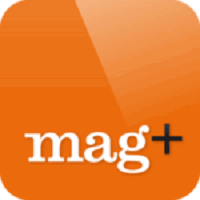Description

Bandwidth

Fliplet
Comprehensive Overview: Bandwidth vs Fliplet
Here's a comprehensive overview of Bandwidth, Fliplet, and Frontegg, focusing on their primary functions, target markets, market share, user base, and key differentiating factors:
Bandwidth
a) Primary Functions and Target Markets
- Primary Functions: Bandwidth is a leading provider of cloud-based communications services and solutions. It primarily offers Voice over Internet Protocol (VoIP) services, messaging (SMS, MMS), and emergency calling solutions (E911). The company provides APIs for voice, messaging, and emergency services, allowing developers to integrate communication capabilities into their applications.
- Target Markets: Bandwidth mainly targets businesses of all sizes, including enterprises, telecommunications companies, and software developers looking to integrate communication capabilities into their applications. It also targets industries like healthcare, finance, and retail that require reliable communication services.
b) Market Share and User Base
- Bandwidth is considered a significant player in the cloud communications space, notably in the North American market. While it does not hold the same market share as larger telecommunications companies like Twilio or Vonage, it has a solid user base due to its focus on VoIP services and compliance with regulatory standards for emergency communications.
c) Key Differentiating Factors
- Regulatory Compliance: Bandwidth's compliance with regulatory standards, particularly in emergency services (E911), sets it apart from some competitors.
- Focus on Voice and Emergency Services: Unlike some other communication platforms that focus mostly on messaging, Bandwidth has a robust focus on voice services and emergency calling features.
- Direct Network Access: Bandwidth owns and operates a national VoIP network, giving it greater control over service quality and costs.
Fliplet
a) Primary Functions and Target Markets
- Primary Functions: Fliplet is a no-code app development platform designed to enable businesses to create custom mobile and web applications. The platform allows users to build apps without extensive technical knowledge by offering pre-built templates and drag-and-drop functionality.
- Target Markets: Fliplet targets businesses in sectors like legal, finance, consulting, and healthcare that require apps for internal communication, client interaction, or operational efficiency. It specifically aims at organizations looking to empower non-technical staff to develop applications.
b) Market Share and User Base
- Fliplet caters to a niche market within the broader growing market for no-code and low-code development platforms. It is particularly popular among enterprises that need customized solutions but lack extensive in-house development capabilities. While it may not have the widespread recognition of larger players like OutSystems or Mendix, it has a dedicated user base that values ease of use and customization.
c) Key Differentiating Factors
- Ease of Use: Fliplet's platform is designed for business users with limited technical skills, making app development more accessible across the organization.
- Industry-Specific Solutions: Fliplet offers templates and features tailored to specific industries like legal and healthcare, allowing for more customized solutions.
- Internal and External App Focus: Its platform supports both internal business process apps and customer-facing apps, catering to various organizational needs.
Frontegg
a) Primary Functions and Target Markets
- Primary Functions: Frontegg is an innovative user management platform that provides robust authentication, user management, and customer self-service solutions. It allows software companies to integrate features like multi-factor authentication, single sign-on, and user activity tracking into their applications.
- Target Markets: Frontegg targets SaaS companies and software developers who require seamless user management solutions to enhance their applications' security and user experience.
b) Market Share and User Base
- As a relatively new entrant in the market focused on user management and authentication, Frontegg is building its reputation and user base. It competes with established identity and access management providers such as Auth0 and Okta but distinguishes itself by appealing especially to growing SaaS startups and tech companies.
c) Key Differentiating Factors
- Developer-Focused: Frontegg provides tools and features specifically designed for developers, making it easier to integrate complex user management functionalities.
- Comprehensive Security Features: The platform offers advanced security features, including adaptive authentication and comprehensive user activity tracking.
- SaaS-Specific Needs: Frontegg focuses particularly on the needs of SaaS companies, offering solutions that cater to their specific requirements in user management.
Conclusion
- Bandwidth stands out for its robust voice and emergency communication services and regulatory compliance, appealing to businesses needing reliable VoIP and E911 services.
- Fliplet allows easy app development for non-tech users, with a niche in industries requiring internal and external apps, particularly legal and healthcare.
- Frontegg targets SaaS companies needing advanced user management features, offering developer-friendly tools and security-focused solutions.
Each solution has distinct strengths and serves different primary markets, making them suited for their respective target customers.
Contact Info

Year founded :
2021
Not Available
Not Available
United Arab Emirates
Not Available

Year founded :
2009
+44 20 3582 9720
Not Available
United Kingdom
http://www.linkedin.com/company/flipletapps
Feature Similarity Breakdown: Bandwidth, Fliplet
To provide a feature similarity breakdown for Bandwidth, Fliplet, and Frontegg, let's explore each of these platforms' core offerings, user interfaces, and unique features.
a) Core Features in Common
Bandwidth:
- Primarily offers communication APIs such as voice, messaging, and video services.
- Focuses on providing programmable telecommunication services for businesses.
Fliplet:
- A low-code/no-code platform that allows businesses to create custom applications.
- Offers solutions for mobile and web apps focusing on ease of use and rapid deployment.
Frontegg:
- Provides a platform for quickly implementing essential SaaS features like authentication, user management, and admin portals.
- Focuses heavily on security and developer-friendly integrations.
Common Core Features:
- APIs and Developer Tools: All three platforms offer APIs and developer tools that allow businesses to integrate their solutions into existing systems, albeit for different use cases.
- Scalability: Designed to support growing businesses by providing scalable solutions.
- Security: They provide varying degrees of user authentication and security features, crucial for protecting business data.
b) User Interface Comparison
-
Bandwidth:
- Typically involves web-based dashboards focused on API management and communication analytics.
- The UI is geared towards developers with tools to manage telecommunication services.
-
Fliplet:
- Emphasizes a drag-and-drop interface for building applications, making it accessible to non-technical users.
- Offers pre-built templates and visual tools to streamline app creation.
-
Frontegg:
- Provides a UI aimed at developers, with a strong focus on integrating authentication and user management features.
- The user interface is highly functional but developer-centric, assisting with quick deployment and configuration of SaaS features.
c) Unique Features
-
Bandwidth:
- Unique in its strong focus on telecommunications, offering voice, SMS, and emergency services integrated through APIs.
- Offers number management and toll-free services, which are distinct from the core offerings of Fliplet and Frontegg.
-
Fliplet:
- Stands out with its no-code/low-code platform enabling non-technical users to create complex applications without needing programming skills.
- Provides a library of customizable app templates for various business needs, unlike Frontegg or Bandwidth's offerings.
-
Frontegg:
- Unique in its pre-built SaaS features specifically targeting developer needs, such as user management, multi-tenancy support, and role-based access control.
- Offers a rich set of integrations with authentication providers, providing a well-rounded identity management solution.
Each platform serves distinct business needs, with Bandwidth excelling in communication APIs, Fliplet in application development for non-technical users, and Frontegg in enhancing SaaS platforms with essential backend features. The choice between them depends largely on a business's specific requirements related to telecommunications, app development, or SaaS infrastructure.
Features

Communication APIs
Number Management
Security and Compliance
Integration and Support

Publishing and Deployment
Collaboration Tools
App Development
Integrations
Best Fit Use Cases: Bandwidth, Fliplet
Bandwidth
a) Best Fit Use Cases:
-
Telecommunications Companies: Bandwidth is a strong choice for telecommunications businesses that require robust and scalable communication APIs for voice, messaging, and emergency services.
-
Companies Needing Enhanced Communication Services: Enterprises that need to integrate voice calling, SMS, and more advanced communication features into their applications or services can benefit from Bandwidth’s capabilities.
-
Businesses Focused on CPaaS (Communications Platform as a Service): Companies offering CPaaS solutions may leverage Bandwidth to provide seamless communication services as part of their offerings.
-
Organizations with High Compliance Needs: Businesses in highly regulated industries that require compliance with communication laws and standards (e.g., HIPAA, CPNI) can use Bandwidth to meet these needs effectively.
Fliplet
b) Preferred Scenarios:
-
Non-technical Teams Requiring App Solutions: Fliplet is ideal for teams without extensive technical expertise that still need to create mobile or web applications quickly and efficiently, thanks to its no-code/low-code platform.
-
Rapid Prototyping Requirements: Companies that need to rapidly prototype and iterate on application designs will find Fliplet’s drag-and-drop interface useful.
-
Internal Applications and Enterprise Solutions: Businesses looking to develop internal tools, manage content, streamline operations, or improve productivity through custom applications might choose Fliplet due to its flexibility and ease of use.
-
Organizations Wanting Reduced Development Time: Enterprises aiming to minimize development time and costs while still deploying functional and feature-rich applications can benefit from Fliplet’s platform.
Frontegg
c) Best Use Cases:
-
Startups and SaaS Providers: Frontegg is particularly valuable for startups and SaaS companies needing to rapidly integrate user management features (such as authentication, authorization, and user experience flows) involving minimal development effort.
-
Complex Authentication Needs: When projects require advanced authentication flows — including multi-factor authentication, single sign-on, and other security features — Frontegg is a strong contender.
-
Fast-Growing Businesses with Scalability Needs: Companies anticipating rapid growth, which will require a scalable solution for user management, can consider Frontegg to avoid bottlenecks related to user onboarding and management.
-
Teams Focused on User Experience: Organizations that prioritize enhancing user experiences around login and authentication processes might find Frontegg’s customizable and ready-to-use solutions beneficial.
Industry Verticals and Company Size
-
Bandwidth primarily caters to mid-sized to large enterprises in telecom, health, tech, and financial services that require reliable and scalable communication capabilities.
-
Fliplet targets sectors such as legal, education, hospitality, and corporate enterprises where there is a need for rapid application development without dependency on extensive IT resources, suitable for both small and large companies.
-
Frontegg appeals to indie developers, small enterprises, and fast-scaling SaaS companies across various industries, offering solutions that fit both nascent and established technology-driven projects where user authentication is crucial.
Each of these platforms addresses distinct needs, emphasizing different aspects of communication, application development, or user management, which cater to varying business requirements and project scales.
Pricing

Pricing Not Available

Pricing Not Available
Metrics History
Metrics History
Comparing teamSize across companies
Conclusion & Final Verdict: Bandwidth vs Fliplet
When evaluating Bandwidth, Fliplet, and Frontegg, it’s crucial to consider various factors such as features, ease of use, scalability, cost, and customer support to determine which product offers the best overall value and suits specific organizational needs.
a) Best Overall Value
Frontegg is often considered to offer the best overall value, especially for organizations seeking comprehensive user management and authentication infrastructure. Its feature set includes customizable authentication flows, user management, and seamless integration, which can enhance productivity and reduce time-to-market for product development.
b) Pros and Cons
Bandwidth:
- Pros:
- Extensive telecommunications capabilities for voice, messaging, and 911 access, ideal for businesses needing reliable communication services.
- Strong integration options with existing systems and platforms.
- High scalability to support growing telecommunication needs.
- Cons:
- Primarily focused on communication services, which might not suit companies needing extensive app development or user management capabilities.
- Implementation and customization might be complex for organizations without dedicated technical teams.
Fliplet:
- Pros:
- User-friendly app development platform that requires little to no coding skills, making it accessible for non-technical users.
- Allows quick development and deployment, which saves time and resources.
- Flexibility to build a diverse range of applications from internal tools to customer-facing apps.
- Cons:
- Might lack advanced features for complex app requirements that technically-inclined developers may expect.
- Customization could be limited compared to a platform with more technical depth.
Frontegg:
- Pros:
- Offers a comprehensive set of user management features including authentication, authorization, and user profile management.
- Optimizes time-to-market for SaaS applications by providing pre-built solutions.
- Allows developers to focus on core product development rather than building infrastructure from scratch.
- Cons:
- Primarily focused on user management, which may not cater to organizations looking for a broader range of development tools.
- Potentially high costs for small businesses or startups if extensive features are not being utilized fully.
c) Recommendations
-
For Organizations with Strong Telecommunications Needs:
- Bandwidth would be optimal due to its robust communication offerings and integrations. It’s suitable for businesses where reliable voice and messaging services are crucial.
-
For Rapid App Development and Deployment:
- Fliplet is ideal for teams prioritizing quick app deployment without extensive coding. It suits companies looking to produce applications swiftly for various business needs without having deep technical expertise.
-
For User Management Solutions in SaaS:
- Frontegg is recommended for its strong focus on authentication and user management, making it perfect for SaaS businesses needing to streamline user-related infrastructure.
Ultimately, the choice between Bandwidth, Fliplet, and Frontegg should be guided by the specific needs and strategic objectives of the organization. Consider the core functionalities that align with your business goals and the level of technical support your team has, to make an informed decision.
Add to compare
Add similar companies



